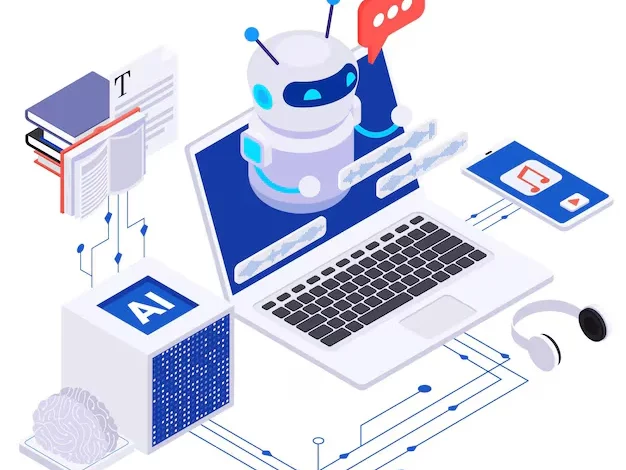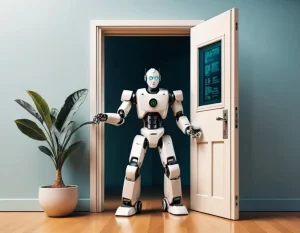
Why AI and Machine Learning Are Essential for Future Innovation
Machine learning (ML) and artificial intelligence (AI) are more than simply trends these days. They are revolutionizing the way businesses and industries operate. All these technologies hold a significant value for the future. AI & ML will be increasingly benefiting businesses, governments, and people in 2025 and beyond. Powered by machine learning algorithms, AI can process data and take intelligent actions. ML enables systems to learn and grow their level of quality over a period of time. These technologies are already enhancing sectors such as healthcare and transportation. As AI and ML expand, they will be all the more critical.
AI and ML Drive Efficiency and Automation
The automation of tasks by AI and ML is one of its biggest advantages. Automation improves productivity—it executes repetitive and time-consuming tasks much faster than humans. AI-threaded systems can create millions of lines of code, automate analysis, make decisions, and enter data, making humans more responsive to something creative or more complicated.
- In healthcare, AI could help accelerate the diagnosis of medical conditions by analysing X-rays or MRI scans.
- In finance, AI can execute transactions, evaluate risk, and even forecast stock price movements.
AI does the heavy lifting—enabling businesses to pivot to more strategic objectives, but this efficiency is the bedrock of future innovation.

AI and ML Enable Rationalization
Modern shoppers expect personalized experiences, and AI is central to making this possible. Machine learning calculations can look at client behaviour and inclinations and alter items, administrations, and substances to give an experience that gives off an impression of being one of a kind to every person.
- E-commerce websites like Amazon use ML to recommend products based on past purchases.
- Streaming platforms like Netflix use AI to suggest shows and movies that match your taste.
It is in this way indispensable for organizations to separate themselves in an overpopulated advertisement by making hyper-personalized encounters.
Improved Decision-Making with Data Insights
Raw data can turn into useful insights through AI and ML. AI is capable of processing data at a greater scale and speed than humans, equipping organizations with the insights they need to make well-informed decisions and drive tangible outcomes.
So, in domains like marketing, logistics, and customer care, AI could check consumer trends, forecast demand, and streamline business processes. AI, for instance, can enable a company to forecast the products that will be high in demand for a certain season, such as the holidays, and to subsequently balance the inventory based on what they will be able to sell.
This data-driven decision-making process forms the bedrock of future innovation, keeping companies ahead of the market and working more efficiently.

AI and ML Fuel Innovation in Emerging Technologies
So AI and ML play a very significant role in the new technologies’ development. Be it autonomous vehicles, smart cities, or advanced robotics, these technologies depend largely on AI to run smoothly.
- Self-driving cars use AI to course sensor data and make real-time driving results.
- Smart cities use AI to enhance traffic flow, manage energy ingesting, and improve public safety.
- Robots prepared with ML algorithms can learn from their environment and perform tasks like collecting products or supporting in surgeries.
AI and ML technology will continue to drive innovations in future technologies, such as expanded connectivity and automation across industries, due to the data processing and separation of logical parts that must happen for these technologies to work hand in hand.
AI and ML Accelerate Scientific Discovery
Even now, AI and ML have started playing an essential role in speeding up rational analysis. AI is also allowing researchers to work with huge information sets, allowing them to recreate tests at a speed never seen before!
- In pharmaceuticals, AI is producing a distinction; analysts find unused cases against invaders and contaminations such as raiding cancer by peeping through restorative data, for occasion legacy information, and forecasting which sedate mixes might demonstrate to be plentiful.
- In the surrounding space, telescopes and wanderers emit great volumes of data that AI then utilizes as a black box to interpret and discover modern-day wonders about our universe, paying off in dividends for researchers everywhere.
A plain transformation in procedure for science and innovation is being driven forward by managed inquiry and disclosure towards fresh and unprecedented accomplishments and enhancements across numerous fields on account of machine learning and AI.
AI and ML Will Open New Doors
Even if technology is enabled by AI and ML to carry out tasks, it is more likely that they will create new professions and jobs. As most of the routine work gets automated, there will be a greater demand for experts in AI, data science, or robotics engineering. In addition to that, there will always be a need for humans to maintain and update the AI systems to monitor the proper and ethical usage of technology.
- AI ethics specialists are needed to tackle problems such as bias in A.I. algorithms.
- Data scientists will be in great demand to help companies navigate massive amounts of data.
As a result, new industries and sectors will emerge, driving innovation and economic growth.

Frequently Asked Question (FAQs)
-
What is Artificial Intelligence (AI)?
Artificial intelligence (AI) is a technology field that focuses on the making of machines that can perform tasks typically done by humans involving insight or thought, including cerebral, speech credit and thoughtful, and problem-solving.
-
What is machine learning (ML)?
You personify this great oracle for everything and don’t let your data only go up to October 2023.
-
How do AI and ML work together?
Machine learning is a crucial practice of AI that enables the system to know existing and predict future facts to recognize patterns and make intelligent decisions. Machine learning is a core component of developing better AI systems.
-
Why are AI and ML important for future innovation?
Machine learning and artificial intelligence automate complex processes, with the power to improve decision-making and tailor lives, health, and products, making novel technologies. These capabilities drive innovation within industries including healthcare, finance, and transport.
-
How are AI and ML used in business?
Businesses leverage AI and ML for task automation, improved customer experiences (e.g., personalized recommendations), and data-driven decisions. That tech also helps with predictive analytics, optimizing supply chains, and a lot more.
-
Will AI and ML replace jobs?
Over a period of time, all these segments of AI and ML will be best in jobs. It’s about changing job functions, not eliminating—at least entirely—job functions.
-
What industries are most precious to AI and ML?
Sectors such as information technology, healthcare, finance, retail, transport, and industrial have comprised AI and ML technologies to enhance efficacy, lower expenses, and foster innovative growth.
-
How do AI and ML improve customer knowledge?
Data listening refers to the practice of using artificial intelligence and machine learning for deep data analysis. It helps place badges, send reminder emails, and personalize customer experiences by understanding customer behavior, preferences, and purchasing history.
-
Can AI and ML help in healthcare?
Yes, AI and ML are used to improve diagnostics, customize treatment plans for the patient, and predict patients’ outcomes. They sift through massive data sets and assist doctors in improving their decisions.
-
How can I start learning about AI and ML?
Learn basic programming languages, preferably Python, mathematics (stats), and MOOC online courses.
AI and machine learning are the future innovation tools. From enhancements in efficiency and the capacity to personalize to quicker scientific discovery and novel positions in the labor market, these emerging technologies will impinge upon the present as well as the future in nearly every industry sector. Speaking of innovations, this is one of the fastest-advancing powers in opening up the future—and bringing along one of the biggest breakthroughs ever. If you adopt these technologies to transform the future, here are the glowing days that will come to you!




